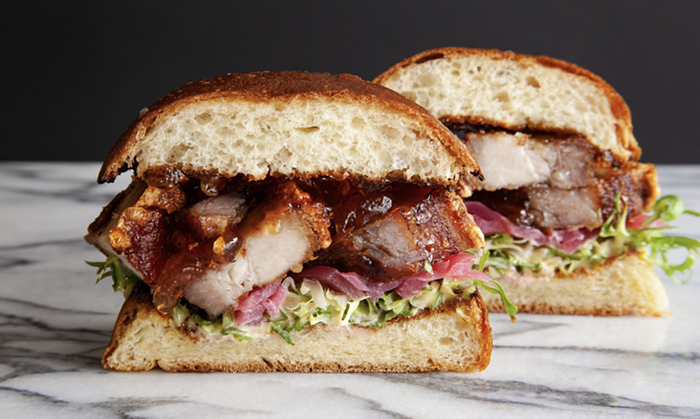That's Kells, and this is Post," says the blonde standing in the alley. "This is the one you want to be in." Kells is an Irish bar, she explains. She confirms that Kells' non-Irish next-door neighbor is indeed new, but is unable to elaborate on her enthusiasm any further. Why is Post, or [POST]—to use its own typographical treatment, as painted on the pavement at the doorstep—preferable? "It's more like a lounge," she says, the virtues of more-like-a-lounge over Irish bar apparently being self-evident. Her also-blond and apparently mute friend nods and smiles. They are both very pretty, doll-like, and their willingness to talk to strangers hesitating on the threshold is disarming.
The entrance of the hesitators into [POST] is taken as something of a personal triumph. "They should pay me to promote this place!" the one who speaks says, and this is absolutely true. Her description—"more like a lounge"—is both accurate and strangely comprehensive, for [POST] defies efforts to locate any kind of remarkable detail. It is not that large and not that small. It's fairly dark.
The decor is minimal: candles, mirrors in vaguely antique-looking but not particularly ornate frames spaced at intervals along the walls. There are tables. The ceiling is low, with exposed ductwork and pipes painted a mauve-ish color reminiscent of liver. In conjunction with dark red-brown walls, mottled concrete floor in the same general palette, an elongated/squiggly floor plan, and windowlessness, the ceiling's height and hue elicit the uncharitable comment, "It's like being inside a digestive tract." ([POST] has a short, unremarkable food menu: a couple salads, a couple sandwiches, mussels, steak frites, fish and chips. A three-item sampling was not that good and not that bad.) A lone bowl of yellow sunflowers sits on the bar; the other bright spots in [POST]'s subterranean dim are provided by two paper crowns worn by two temporary kings who hold court in a corner in a celebratory manner.
[POST] also has a couple of large pillars of the clearly load-bearing variety in its midsection, making for the odd sightlines of an underground parking garage. (The blondes, for instance, disappear after re-entering, never to be seen again.) [POST] is not named for its own posts, however, but for its alley in the Pike Place Market. Post Alley, in turn, is named for the Seattle Post, which was located at Post Alley's southern end, at Yesler, until the Great Seattle Fire of the summer of 1889. (The Seattle Post became the Seattle Post-Intelligencer, now known as the PI.) A framed page from another bygone newspaper, the Seattle Daily Times, hangs on one of [POST]'s walls where a framed mirror would otherwise be. From 101 years ago, the headline proclaims "PUBLIC MARKET IS POPULAR." [POST] is, as of yet, neither here nor there. ![]()


















